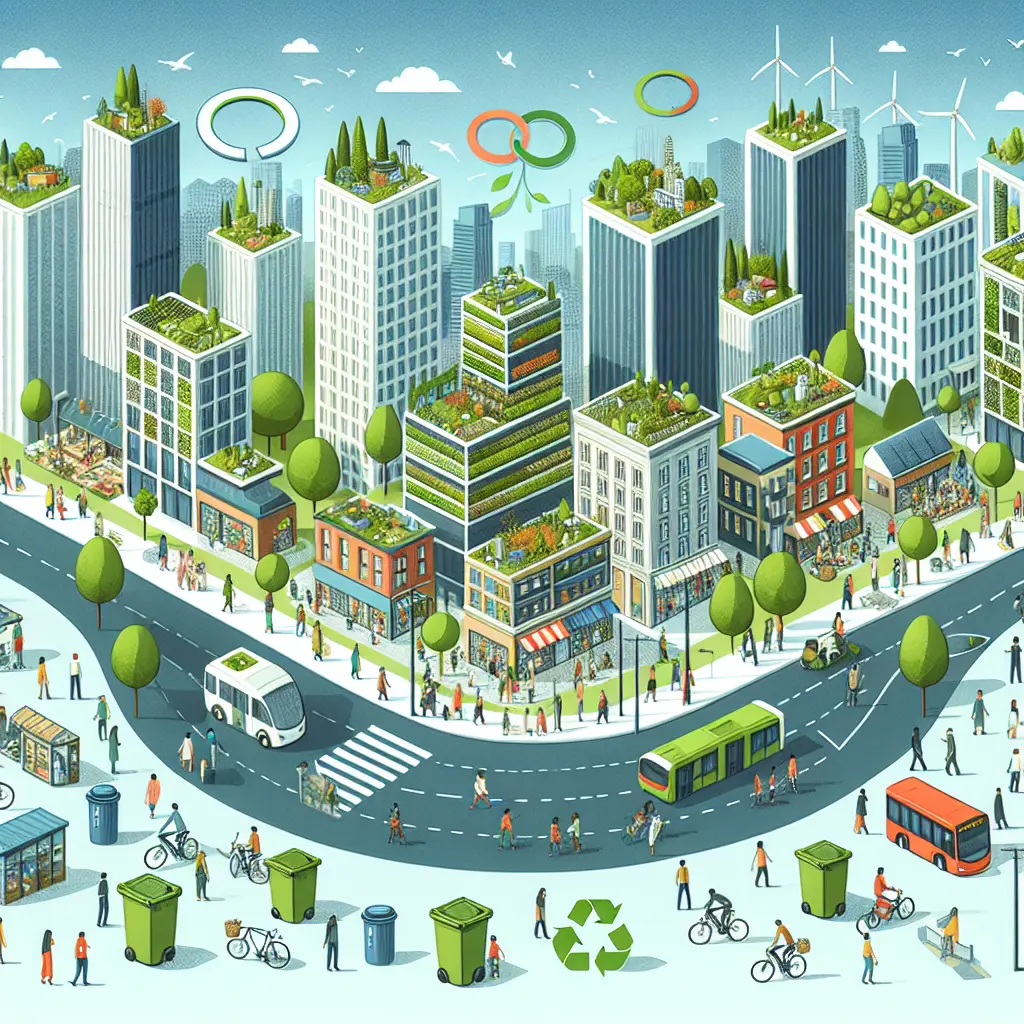
Transforming Urban Development with the Circular Economy
In today's rapidly urbanizing world, the circular economy offers a transformative approach to urban development that champions sustainability and resilience. As cities expand, the imperative to build sustainable cities becomes paramount, with urban planners and policymakers seeking innovative solutions to mitigate the environmental impact of traditional linear economies. The circular economy introduces a paradigm shift that emphasizes waste reduction and resource efficiency, promoting green infrastructure and eco-friendly cities designed to thrive within our planet's ecological limits.
Recycling Innovations in Urban Systems
Recent technological advancements have opened new avenues for recycling in cities, significantly impacting urban sustainability. For instance, using lasers to convert waste plastics into carbon dots is a promising development that enhances resource efficiency in urban environments. Furthermore, transforming waste plastics into carbon nanotubes (CNTs) advances the goal of carbon neutrality. These cutting-edge technologies exemplify how circular economy principles can be integrated into urban planning to promote sustainable urban growth.
Redefining Design in Sustainable Cities
The transition from a take-make-waste society to a circular economy poses both challenges and opportunities for designers. This shift drives designers to rethink traditional practices and embrace more sustainable approaches. The emerging focus on green infrastructure and eco-friendly city designs aligns with the objectives of smart cities, where innovation meets sustainability. By fostering a design culture that prioritizes waste reduction and resource efficiency, urban areas can achieve significant environmental impact reductions while creating aesthetically pleasing and functional spaces.
Addressing Challenges in Circular Economy Implementation
Overcoming Mindset Traps
Successful integration of circular economy strategies in urban development requires overcoming certain mindset traps. Recognizing these barriers is crucial for advancing global circularity. By acknowledging these challenges, policymakers and urban planners can devise strategies that align with sustainable development goals and support urban regeneration.
Navigating the Intersection of Capitalism and Circular Economy
The relationship between capitalism and the circular economy is complex, often resembling a tug of war. Industries such as fast fashion highlight the inherent conflict between profit-driven motives and sustainable practices. However, by adopting circular economy strategies, cities can reduce their environmental footprint while fostering economic resilience. Efficient resource management not only lowers costs but also stimulates local economies and creates jobs, contributing to zero waste cities and more resilient communities.
Tackling Biodiversity and Resource Challenges
Biodiversity Conservation in Urban Planning
The impact of industrial activities on biodiversity is a significant concern in urban development. Addressing this issue requires integrating biodiversity conservation into urban planning processes. By doing so, cities can enhance urban sustainability and ensure that future generations inherit thriving urban landscapes.
Innovations in Renewable Resources
The use of renewable resources is at the heart of sustainable urban development. For example, replacing components of lithium batteries with materials derived from trees highlights the potential for renewable resources to address environmental concerns while supporting green infrastructure initiatives. By incorporating such innovations, cities can enhance their resource efficiency and reduce reliance on non-renewable materials.
Conclusion
The impact of the circular economy on urban development is profound and multifaceted, offering transformative benefits across environmental, social, and economic dimensions. By embracing recycling innovations, redefining design paradigms, addressing mindset traps, and fostering renewable resource use, cities can achieve sustainable urban growth and transition toward zero waste cities. As we continue to explore this vital intersection of circular economy and urban planning, it becomes increasingly clear that these strategies are not merely optional but essential for ensuring the longevity and livability of our urban environments.
Integrating circular economy principles into city design requires concerted efforts from all stakeholders, including policymakers, designers, industry leaders, and citizens. By working collaboratively, we can overcome the challenges posed by traditional linear economies and pave the way for smart cities that prioritize sustainability and resilience.
For further insights into the latest developments in circular economy strategies and their application in urban planning, please refer to reputable sources such as Sci-Tech Daily, Dezeen, and others that offer in-depth insights into circular economy strategies.
I invite you to share your thoughts and experiences on how circular economy principles can be integrated into your community. Together, we can pave the way for smarter, more sustainable cities. Let's embark on this journey toward a greener future.
Author: Amanda Lawson